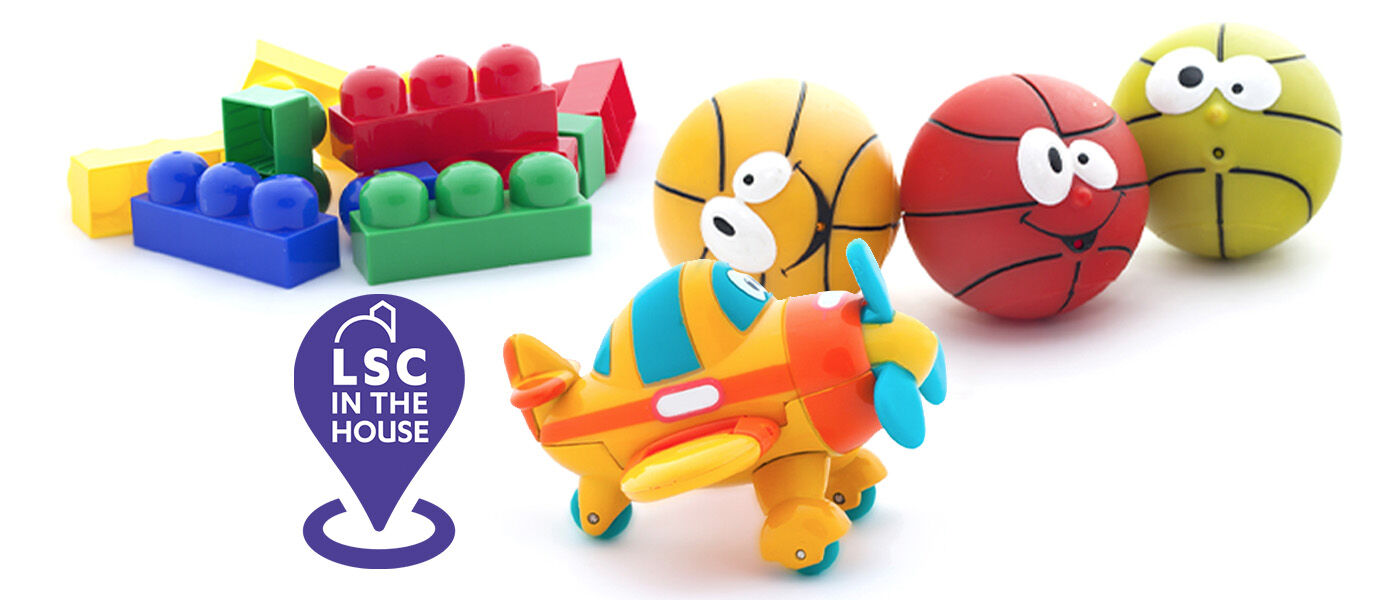Does it Roll or Does it Slide?
Activity Time: 10 - 15 minutes
Recommended Grades: Pre-K - 2
Objectives: Explore what kinds of shapes roll versus slide using everyday objects around your home.

- Tray or picture book
- Rectangular foam block x 2
- Assorted materials to test
Here are some suggested items, but you can try any object.
- Pom poms (varying sizes)
- Cotton balls
- Pennies
- Building block
- Vegetable can
- Toy cars

- Begin by creating a slide or incline where you will be working. Take a tray or flat picture book and place it with one side resting on an elevated surface such as a chair and then the other resting on the carpet. You can later alter how steep your incline is by moving the side of your tray or book that’s resting on the carpet closer to your chair.
- When your ramp is set up, take out the various objects you collected.
- Time to start testing the objects one at a time. As you test, sort the objects into two groups: those that slide down the ramp and those that roll like a car.
- What did you notice? Were certain shapes more likely to roll than others?
- If you have extra time, try making a steeper incline. Remember, do this by moving the side of the book or tray that is touching the carpet or floor closer to the chair on which it is resting. What happens now? Do more shapes start rolling? If so, why do you think that is?
Questions to Ask:
- How did the materials move differently down the ramp?
- What does this tell us about how cars might work best?

Any moving object moves because of a force that is acting upon it. A force is invisible, but we can define a force simply as either a push or a pull. We can see forces in action when we play with a ball. If we kick or push the ball, it goes in one direction moving in the way we pushed it. We can make it move faster or farther if we push or kick harder.
So what is happening in our experiment? A pulling force affects each object as it goes down the incline, just as there is one pulling you when you go down a slide. But just like we sometimes get stuck on a slide, some objects get stuck or go more slowly down an incline. This involves a force called friction and also has to do with the shape of each object. You most likely observed that objects shaped like a ball or cylinder move more easily down the incline than those shaped like a box, for example. We can think of friction as the force stopping an object from moving any farther. But we can sometimes overcome friction by changing how fast we make our objects move. We can see this by making a steeper incline. If you haven’t tried this yet, give it a try and have fun!
To make it more fun, try looking for and collecting objects that are different three-dimensional shapes. Think pyramids, cylinders, cubes, spheres, and rectangular prisms: tiny boxes, empty soda cans, and blocks or toys that are different shapes.
Key Terms
Roll - moving by turning over and over on an axis.
Slide - moving along a surface.
Steep - describes how sharp our incline is. Does it rise or fall quickly or slowly?
Friction - resistance that an object encounters when moving over a surface or other object.
You can also see Mr. Kengo conduct this experiment over on our YouTube channel!
